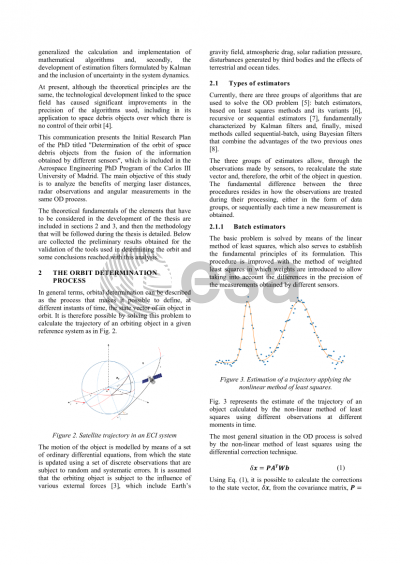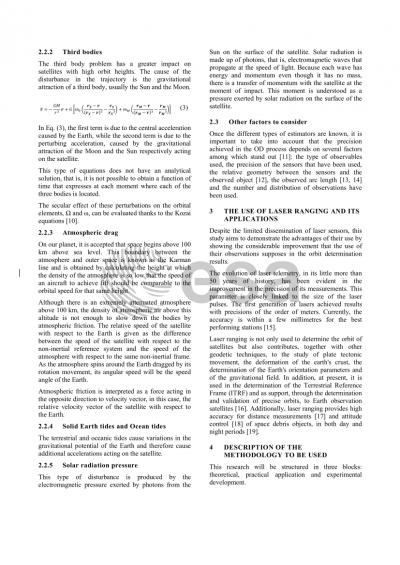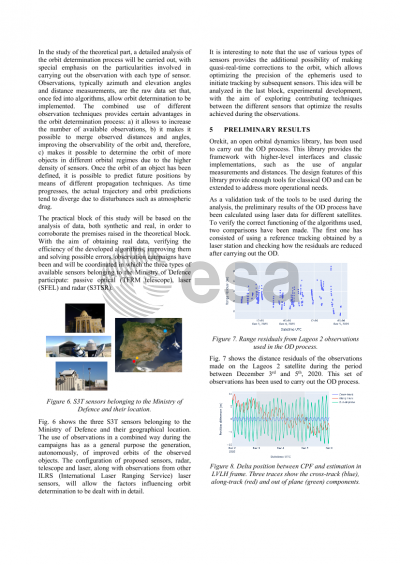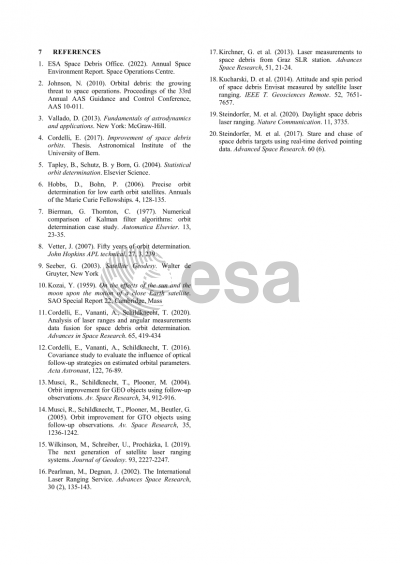Document details
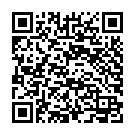
Abstract
The proliferation of space debris puts the continuity of space missions at risk and poses a serious challenge to be corrected. The number of objects classified as space debris is increasing rapidly, especially in regions of high interest for commercial or scientific exploitation (LEO and GEO). Due to the high added value of these regions, the cataloging, and more specifically, the orbit determination of space debris objects has become a topic of great importance and growing interest.
The combined used of different observation techniques provides certain advantages in the orbit determination process: a) it allows to increase the number of available observations, b) it makes it possible to merge distances and angles, improving the observability of the orbit, and therefore, c) it makes it possible to perform the orbit determination process of more objects, in different orbital configurations, due to the greater density of sensors.
In general terms, the precision achieved in this process will depend on several factors, among which the following stand out: the type of observables and the precision of the sensors used, the relative sensor-object geometry, the observed arc length and the distribution and number of observations contemplated. In order to evaluate the contribution of each of these factors, free software orbital dynamics libraries have been used, such as Orekit.
The main objective of this study is to analyze the benefits of merging laser distances, radar observations and angular measurements in the same orbit determination process. In order to verify the efficiency of the algorithms used, observation campaigns have been coordinated between the three sensors of the Spanish Ministry of Defense dedicated to SST: the S3TSR (Spanish Space Surveillance Radar) radar, the TFRM (Telescope Fabra ROA Montsec) telescope and San Fernando laser ranging station.
Preview

